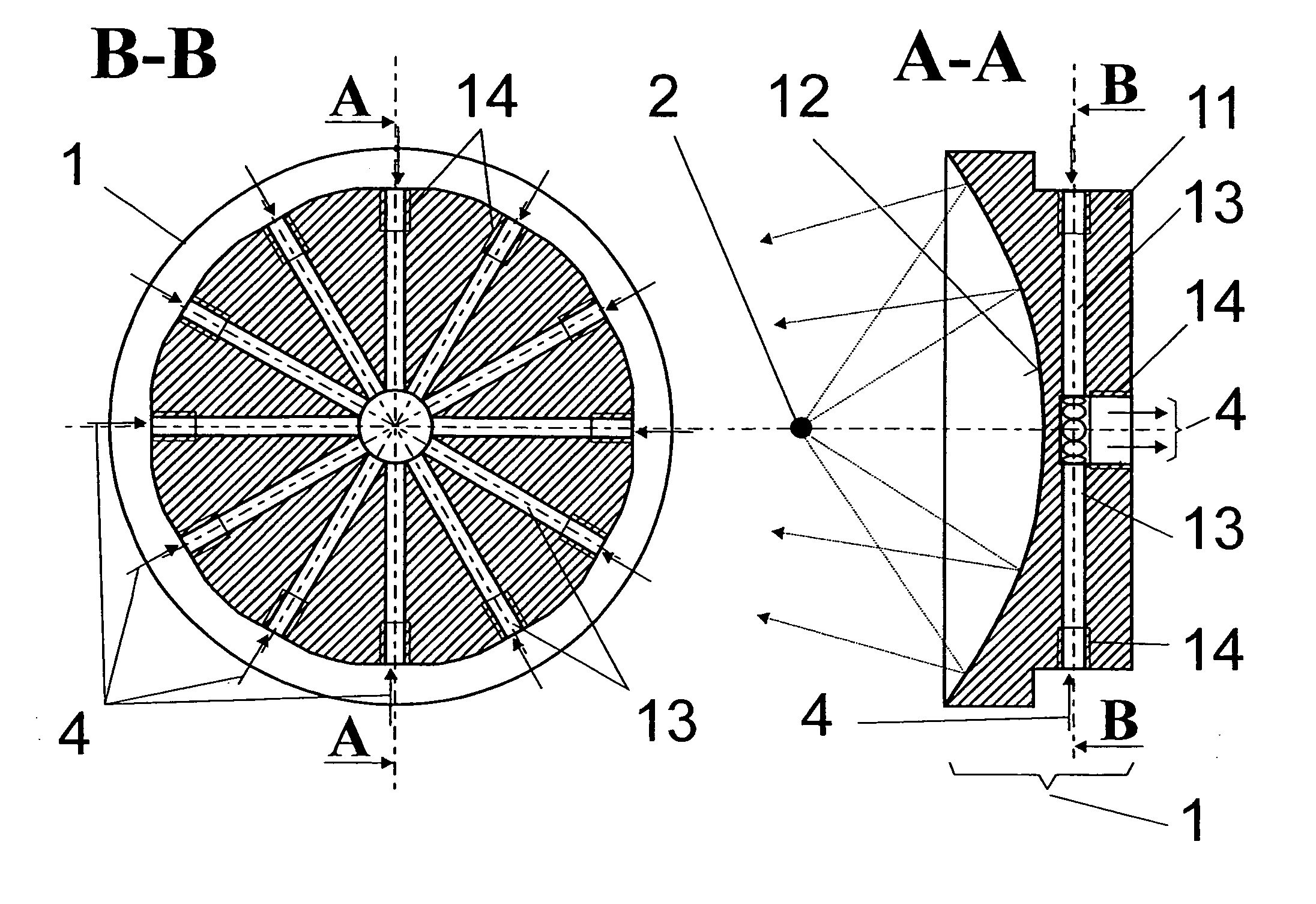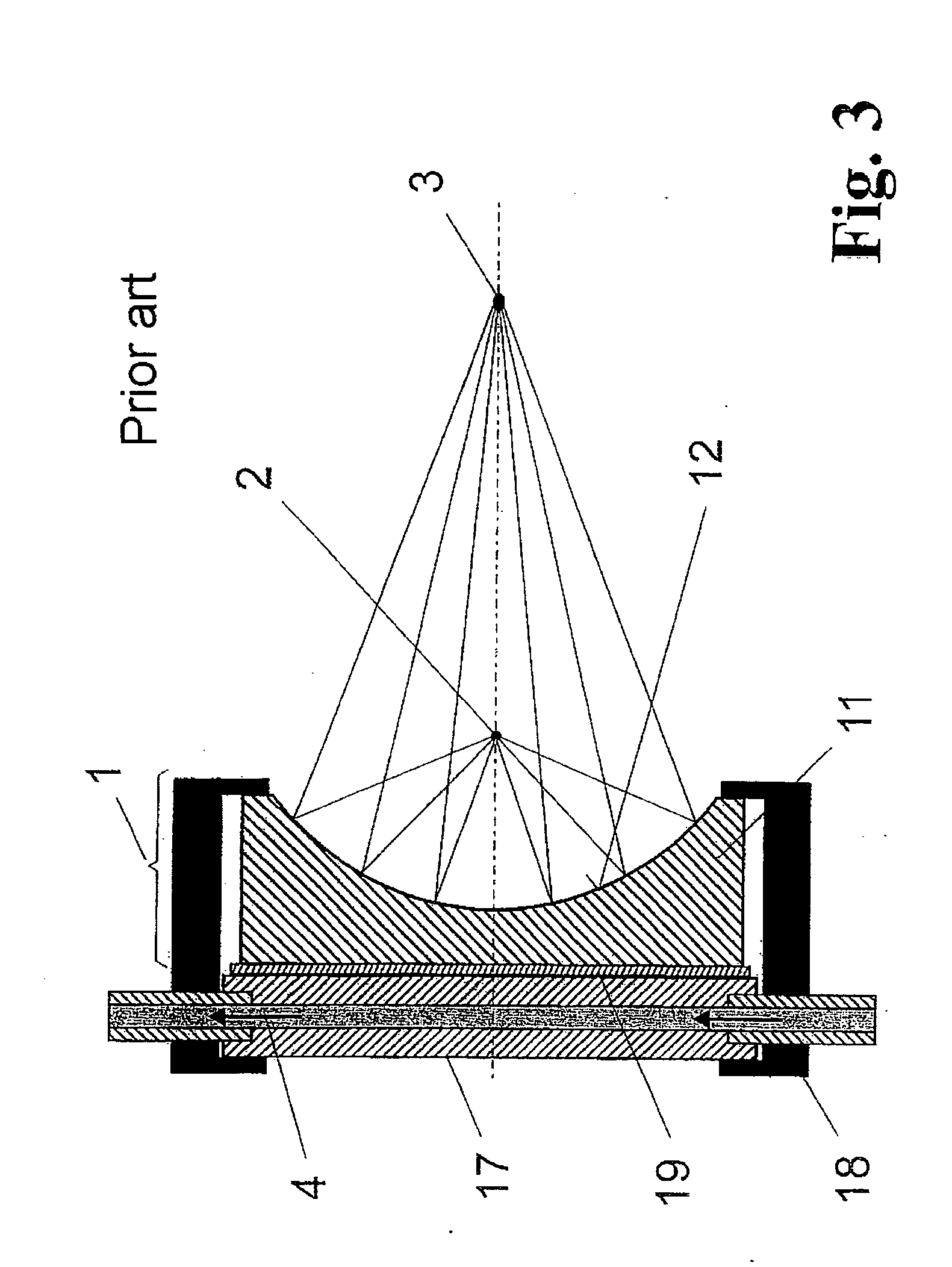Collector mirror for plasma-based, short-wavelength radiation sources
a radiation source and collector mirror technology, applied in the field of collector mirrors for shortwavelength radiation sources, can solve the problems of reduced reflectivity, reduced radiation load and thermal load, and too small thermal conductivity to use as a substrate of a collector mirror in an euv source, so as to achieve high-performance thermal connection and increase expenditur
- Summary
- Abstract
- Description
- Claims
- Application Information
AI Technical Summary
Benefits of technology
Problems solved by technology
Method used
Image
Examples
Embodiment Construction
[0032] The task of collecting the radiation required for the lithographic process from a large solid angle around the source location (plasma 2) and projecting it into an intermediate focus 3, as it is called, is accomplished generally and in a conventional manner by a collector mirror 1 in a plasma-based short-wavelength radiation source which emits intensive radiation, for example, in the EUV range around 13.5 nm. This arrangement is illustrated in FIG. 3 and shows the conventional cooling of the collector mirror 1, according to the prior art, with a cooling body 17 which is intended to protect the reflection layer 12 applied to the optically active surface against overheating. In this connection, large-area planar surfaces of the cooling body 17 and substrate 11 (at the back of the collector mirror 1) are pressed against one another in a frictional engagement by means of a holder 18. The heat transmission between the two parts is routinely reinforced by a heat-conducting layer 19...
PUM
 Login to View More
Login to View More Abstract
Description
Claims
Application Information
 Login to View More
Login to View More - R&D
- Intellectual Property
- Life Sciences
- Materials
- Tech Scout
- Unparalleled Data Quality
- Higher Quality Content
- 60% Fewer Hallucinations
Browse by: Latest US Patents, China's latest patents, Technical Efficacy Thesaurus, Application Domain, Technology Topic, Popular Technical Reports.
© 2025 PatSnap. All rights reserved.Legal|Privacy policy|Modern Slavery Act Transparency Statement|Sitemap|About US| Contact US: help@patsnap.com



